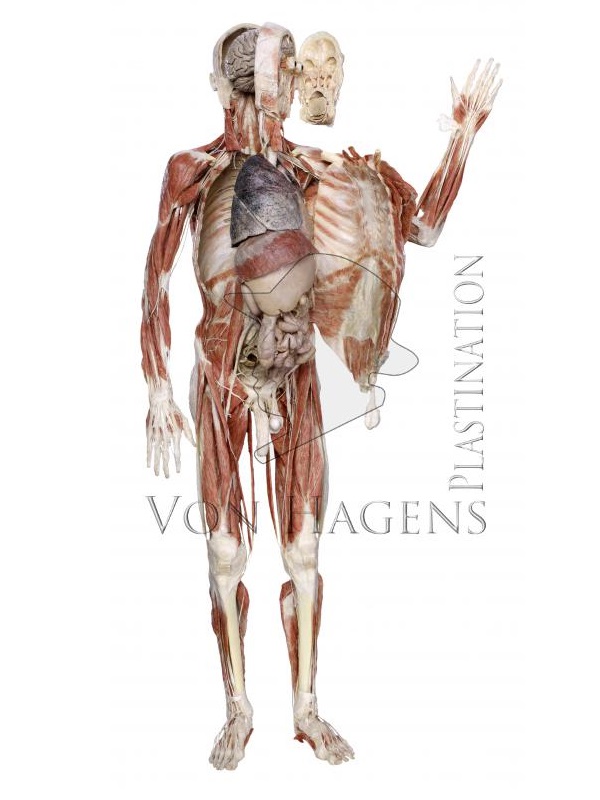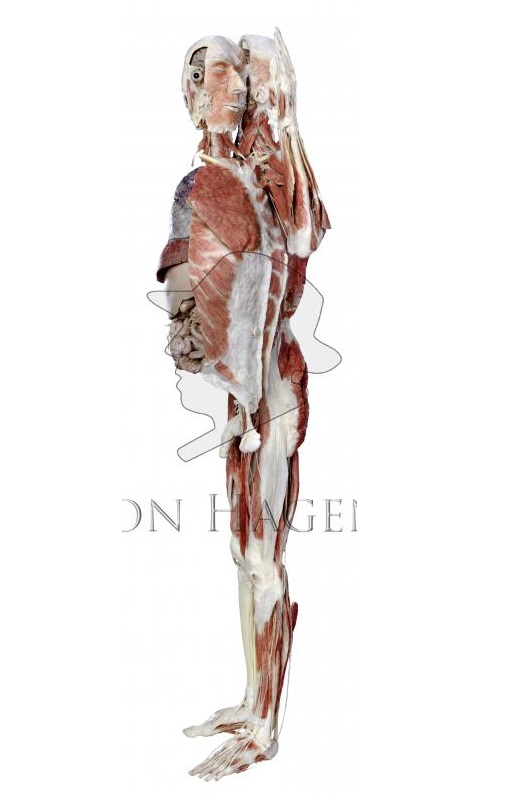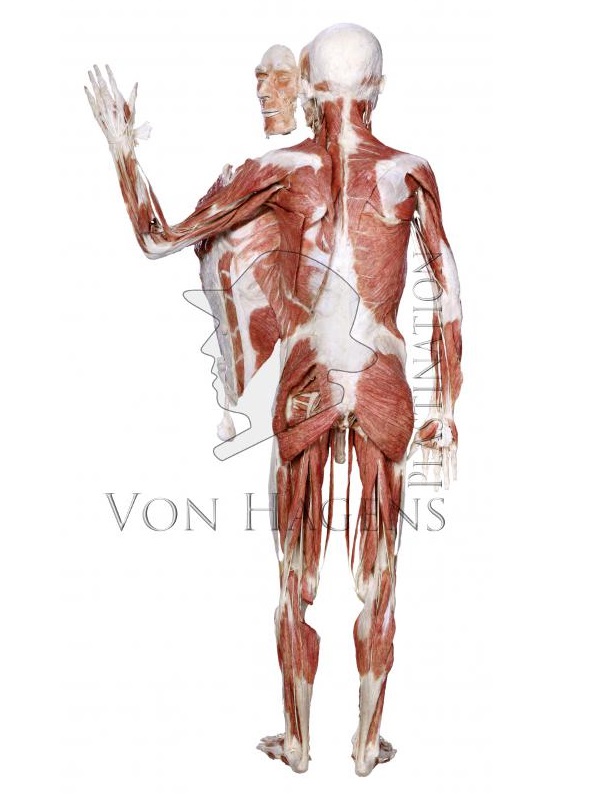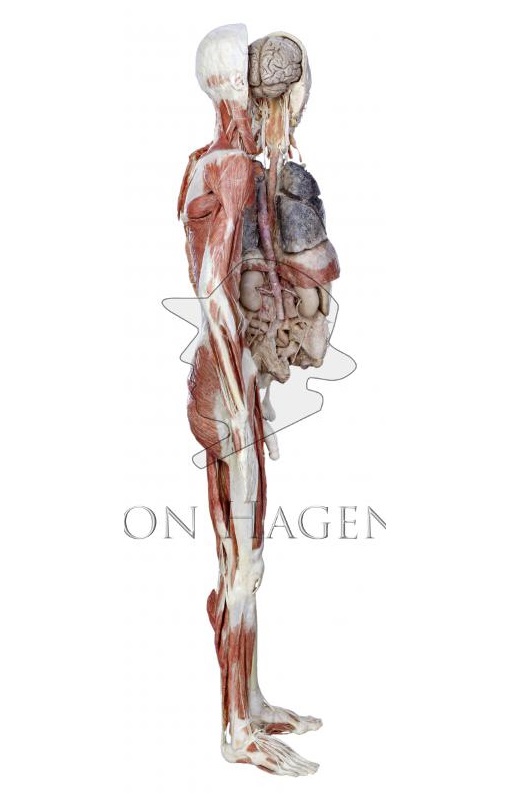Body No. 1 is positioned to provide easy access to all areas of the body. The body is best suited for the Gross Anatomy Curriculum because of the following features: The anatomical and topographical relationships of all body parts, and regions, structures, body cavities and internal organs can be observed according to their natural position.
1. Head and Neck
- The cranial cavity is opened to display the brain within it-
- Dissection of the head demonstrates the facial muscles, nerves, and blood vessels-
- The frontal cut permits viewing of the oral, nasal and paranasal cavities from behind, orbital structures can be observed
- Both sides display the muscles of the triangles of the neck, organs and other structures, such as main nerve bundles, and the carotid arteries with their branches
2. Thorax, Abdomen and Pelvis
- Dissection of the trunk reveals the relationship of bones, muscles, blood vessels and nerves
- Presentation of the thoracic and abdominal cavities is permitted by reflecting the thoraco-abdominal wall with a frontal cut, as if opening a door
- All organs of the thorax and abdomen are well exposed and are presented in situ, divided from the rear abdominal wall; or as on request can be placed separately outside of the body
3. Extremities
- Combined combined superficial and deep dissection of the muscles of the extremities
- The origins and insertions of each muscle are clearly demonstrated, and the muscles themselves are separated from each other along their pathways
- Dissection of main nerves and arteries which are listed in anatomical nomenclature
Silicone Plastinates are plastinated specimens from real human bodies. They include almost every body part from organs and nerve systems to whole body specimen.
Silicone Plastinates have a high didactical value and are particularly suitable for universities and museums. Their unique three-dimensional complexity illustrates the intricate structure of the musculoskeletal system and the inner organs as well as their relative position to each other. These specimens keep their natural form and thus allow students and professionals to examine structures and details of the body better than any model.
More than 400 teaching institutions around the world use plastinated specimens for teaching.
Silicone Plastinates are odorless and not harmful to health even when handling without gloves. They are durable, flexible, authentic, do not shrink. Anatomy specialists dissect our specimen with painstaking detail and anatomical precision to assure accuracy and highest quality.
All Plastinates are produced in Germany, near Berlin. Each Plastinate is handmade and produced under strict ethical guidelines.





